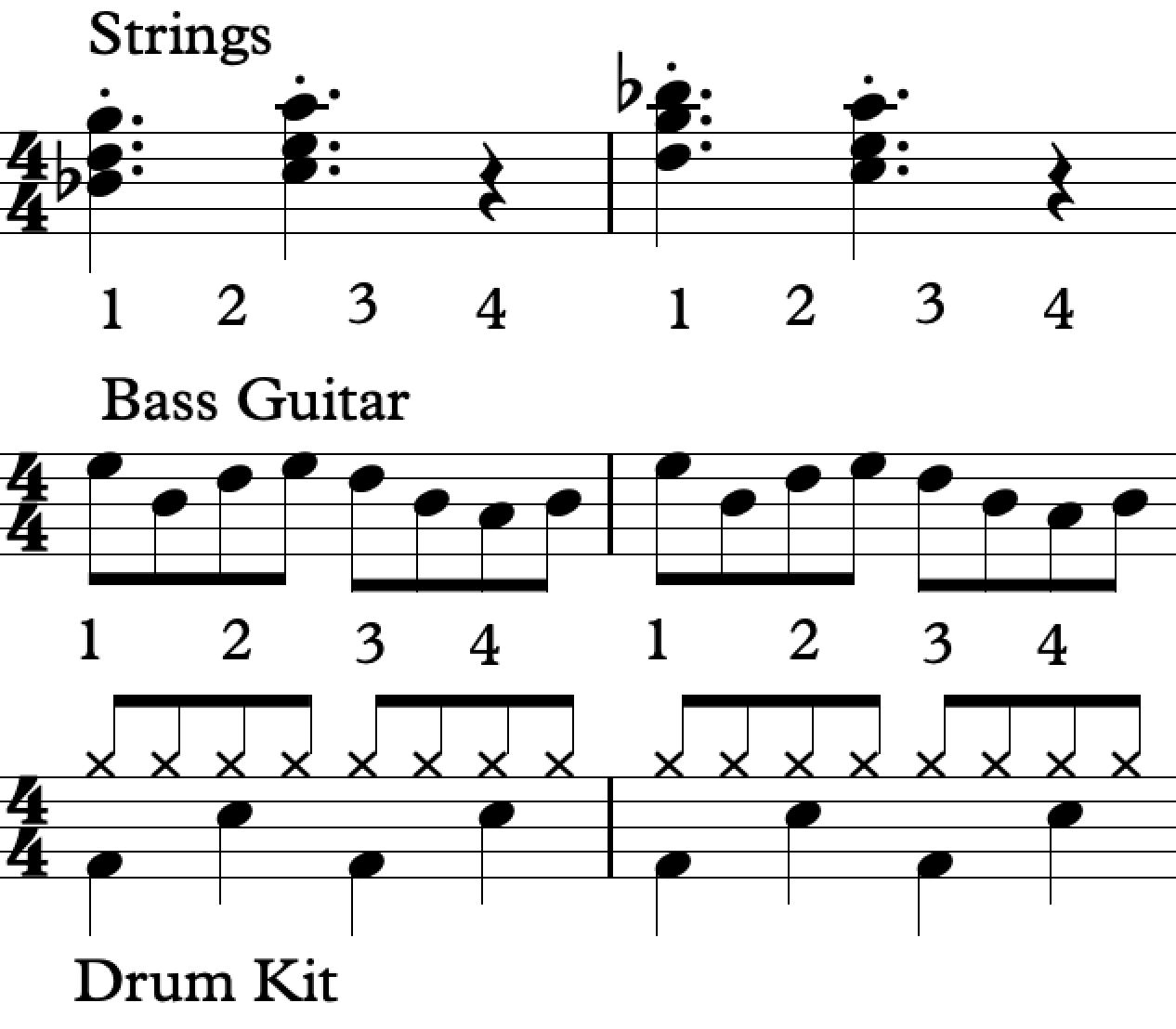Rhythm Explained: Part 1
We now know how fast or slow to go in a song, but how do we count how many beats we are on? Do we start at one and keep going until we hit 639?!?!?! Not exactly. We do need to count beats, but counting them as single numbers gets really confusing, especially when musicians need to start from the middle.
Let's look at the terms before we go further to make the next bit easier to understand.
- Beats are the clicks that happen in a metronome. They are usually counted as "1, 2, 3, 4, ..."
- A Bar is a group of beats. A group of 4 beats can be a bar and would be counted as
1, 2, 3, 4,
2, 2, 3, 4,
3, 2, 3, 4,
4, 2, 3, 4...
The bold numbers are the bar numbers, and the other ones are beats.
The beat is the back bone of the song. Think of it as your heart beat. It always ticks along, usually at the same pulse. That is the beat in music. When you listen to a song and you nod your head, you are subconsciously connecting to that beat. It usually comes from the drums. Let's listen to the drums in Billie Jean as an example.

We will break it down so we can find the beat. So this is the first thing for us to listen to, the kick drum, or the bass drum. This is the deepest/lowest sounding drum. This is one of the most important things in music, as it is the back bone of the beat. Now I'm going to remove the snare so we just hear the kick drum and connect to that beat. Now tap your feet to just the kick drum. I have added a hi-hat to break down the beats for you too.

Now we have that beat in our head. Let's add the snare to this. So adding the snare hit to the backbone rhythm, it just makes it twice as fast. Our foot still taps in time with every time the kick drum hits. We can count this beat with numbers to tell us where we are. We normally count in 4s, so 1, 2, 3, 4, 2, 2, 3, 4, 3, 2, 3, 4, and we can say the first number louder so we know which bar we are in. If we want to count in-between the 1, 2, 3, 4 then we can subdivide these to be 1, and, 2, and, 3, and, 4, and. It's good to practice this counting. When we listen to the Billie Jean drums, we should count the hi-hats as 1, and, 2, and, 3, and, 4, and... etc.

We now have our beat. Whenever we learn any song, we must always start with learning the beat. This should come quite naturally after a short while, but is crucial to learning any song. Once we have that down, we can start working on the fun stuff, the melodies! The melodies are rhythms that play alongside the beat. The can play on the same beat, or they can play in-between beats. Here is the bass line over the top of the beat.

There are 2 melodies in the intro. There is a bass guitar and strings, but let's listen to just the strings in Billie Jean. They don’t play on the same beat, they play on the 1 and the 2 and. I have accented (made louder) the notes where they play. Here take a listen:

So we have our beat and we have our melody. The beautiful thing about music is we can have as many melodies as we like. When you're listening to a song, see if you can pick out how many melodies there are. In Billie Jean, there are 3 in this example (Bass, Strings, Voice). Here they are together.

You can have as many melodies as you like in a song, but sometimes less is more.
And that is a crash course in rhythm. I hope this makes a bit more sense, but the main takeaways are these:
- Always find the beat to the song before anything.
- Count the beats in numbers (usually 1and2and3and4)
- If you are learning a guitar part, that is usually a melody, so figure out the rhythm that guitar part is doing, try and sing it back over the beat.
- Once you can sing it over it and with it, you know the melody and the rhythm already. You just need to put it on your instrument!